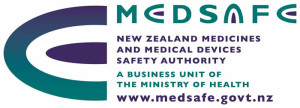First email to Medsafe
 I emailed Medsafe on why fluoridated water was not classed as a medicine under the NZ Medicines Act. This is their reply (from Rowan Pollock).
I emailed Medsafe on why fluoridated water was not classed as a medicine under the NZ Medicines Act. This is their reply (from Rowan Pollock).
Dear Daniel
Apologies for the delay in response. Yes, a medicine is defined in S3 of the Medicines Act as:
a substance or article, other than a medical device, that is manufactured, imported, sold, or supplied wholly or principally for a) administering to one or more human beings for a therapeutic purpose b) use as an ingredient in the preparation of any substance or article that is to be administered to one or more human beings for a therapeutic purpose,
- where it is so used- in a pharmacy or a hospital; or
- by a practitioner, or registered midwife or designated prescriber, or in accordance with a standing order; or
- in the course of any business that consists of or includes the retail sale, or supply in circumstances corresponding to retail sale, of herbal remedies;
c) use as a pregnancy test. S4 defines the term therapeutic purpose as:
- treating or preventing disease
- diagnosing disease or ascertaining the existence, degree, or extent of a physiological condition
and several other non-pertinent activities.
However, Medsafe has never considered the fluoridation of water to lead to the creation of a medicine. Fluoride is found naturally in water at varying concentrations and water is not supplied for a therapeutic purpose. We consider that the principal use of water and foodstuffs (which contain minerals or fluoride) is dietary and not therapeutic. We therefore do not consider the addition of substances such as chlorine or fluoride, or alum to water to be under the remit of the Medicines Act but rather under the control of other public health and water quality legislation. A similar argument can be used in relation to quinine. While quinine is a medicinal substance, the quinine contained in a gin and tonic, no matter how therapeutic we might think consuming one may be, does not make tonic water (or gin) a medicine.
This pragmatic approach to the legislation is clearly what was intended by parliament. Too rigid an interpretation quickly makes everything a potential medicine. After all we drink water to prevent dehydration which is a symptom of a disease state. This kind of over-interpretation of the wording of the legislation is not, and has never been the intention of parliament. Finally while we must accept that fluoride in certain concentrations and formulations is scheduled as a medicine in several schedules within the Medicines Act, the concentrations of fluoride in drinking water are well below the threshold for consideration as a medicine and so would be considered to fall within the controls of other legislation, such as water quality control etc. Fluoride is also an element and it is naturally found in a great many places, the presence of fluoride, or any other element or mineral in an item does not make the item a medicine. After all, lithium can be used as a medicine, but its presence in a lithium battery, or a paint, does not make that product a medicine. I hope this information is useful to you.
Kind regards
Rowan
Medsafe Pharmacovigilance Team
Second Medsafe email
I followed up and asked about the cut off point. Rowan replied:
Dear Daniel
I have a received a response to your query as follows: The cut-offs and particulars around fluoride-containing medicines dictate whether a medicine is only available on prescription or can be purchased “over the counter” in a pharmacy or from any retail outlet. They are set out in a schedule to the Medicines Regulations and updates are published in Gazette Notices.
This information is collated and published in a readily searchable format on the Medsafe website (along with information about the classification process). The links may be found at:
http://medsafe.govt.nz/profs/class/classintro.asp
http://www.medsafe.govt.nz/profs/class/classificationprocess.asp
Kinds regards
Rowan
Medsafe Pharmacovigilance Team
Conclusion
Medsafe does not class community water fluoridation as a medicine.
